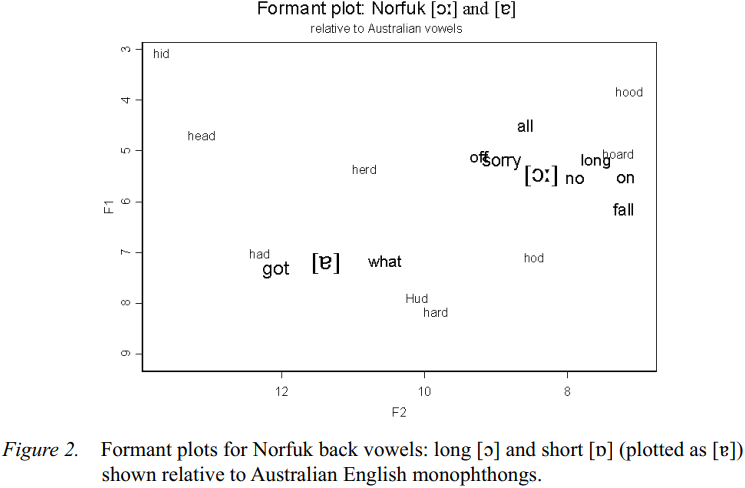


 Grammar
Grammar
 Tenses
Tenses
 Present
Present
 Past
Past
 Future
Future
 Parts Of Speech
Parts Of Speech
 Nouns
Nouns
 Verbs
Verbs
 Adverbs
Adverbs
 Adjectives
Adjectives
 Pronouns
Pronouns
 Pre Position
Pre Position
 Preposition by function
Preposition by function 
 Preposition by construction
Preposition by construction
 Conjunctions
Conjunctions
 Interjections
Interjections
 Grammar Rules
Grammar Rules
 Linguistics
Linguistics
 Semantics
Semantics
 Pragmatics
Pragmatics
 Reading Comprehension
Reading Comprehension|
Read More
Date: 2024-04-04
Date: 2024-02-12
Date: 2024-07-06
|
Norfuk may not possess as many phonemic contrasts as Australian English among its back vowels. Further analysis is needed. However, it is clear that, even if the number of contrasts is comparable, their distribution among cognate lexical forms is different, and there are also clear differences in phonetic implementation of the contrasts. Table 2 shows the phonetic correspondences that were found among cognate forms for the distinction between [ɒ] and [ɔ:] which is found in Australian English and other non-rhotic varieties.

It is notable that the short counterpart of [ɔ:] is much more restricted in its distribution in Norfuk than in Australian English. The Norfuk short [ɒ] was limited to a few closed-class items, leading one to suspect that at least in earlier varieties of Norfuk there was no productive phonological contrast between long and short (or tense and lax) non-high back vowels. The short vowel forms may simply represent phonetically reduced function words. This is supported by acoustic analysis of vowel quality differences between Norfuk [ɒ] and [ɔ] , shown in Figure 2.

Norfuk [ɔ:] occupied a similar position in vowel space to its Australian English counterpart. The short vowel was quite centralized and more broadly scattered over vowel space than is indicated by the centroid plots for the multiple tokens of what and got. Phonetically this short vowel is more appropriately labelled [ɐ].
|
|
|
|
دور في الحماية من السرطان.. يجب تناول لبن الزبادي يوميا
|
|
|
|
|
|
|
العلماء الروس يطورون مسيرة لمراقبة حرائق الغابات
|
|
|
|
|
|
|
ضمن أسبوع الإرشاد النفسي.. جامعة العميد تُقيم أنشطةً ثقافية وتطويرية لطلبتها
|
|
|